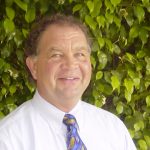Dialing Up the Vis, Part 2
The Vital Conversation
James Sensenig, ND
This is the second part of a 3-part article from The Vital Conversation that took place on June 22, 2016. It is part of a new series of articles in NDNR based on transcripts of conversations that occurred on Wednesdays for several years and were hosted by Jim Sensenig, ND, and other senior vitalists. In this lightly edited transcript (by Emily Kane, ND), Dr Sensenig continues a discussion of working with the vital force, and describes how this work defines and differentiates naturopathic physicians.
Defining the Vital Force
When trying to define the vital force, we can employ the mental exercise of trying to define gravity. When we use the term “gravity,” what we are talking about is the observable phenomenon that mass attracts mass. We have mathematical formulae which tell us that a mass will attract another mass in direct proportion to the square of its radius.
When we talk about flying airplanes, or dropping rocks, or shooting bullets, or driving cars over a cliff, we don’t talk about masses attracting proportionately to the square of the radius. Instead, we say “gravity.” Everybody knows what we mean by that phenomenon, or by the word that describes it.
That might be true of the vital force. Another way to talk about this vital force, or this vital principle, is to say that it is life itself, which resides within all of us and within all living things. Life is a type of element that we are all aware of, and which we invoke to explain a multitude of observations. We can’t put the Vis Medicatrix Naturae in a box with a bow on top. However, that doesn’t mean that it’s not really there, or that the phenomenon is an illusion.
In a vitalist world, there are no nouns. There are no “things.” In a vitalist world, everything is moving; everything is dynamic; everything is energetic. In a world view where the vital force is primary, we recognize a universe of vibration. Vitalism is a different paradigm (from materialism), which requires not just a different way of thinking, but also its own language. When you’re dealing with a paradigm shift, either personally or as a culture, as we are today, it can be difficult to find language for the new paradigm. This is because the language that we have, the language that we have developed, applies to the existing dominant paradigm.
So, we need to come up with new ways of thinking and talking. Maybe we have to borrow words from the other paradigm. Let’s go back a step and use the example of Thomas Kuhn in his book, The Structure of Scientific Revolutions.1 Kuhn uses the classic example of the flat earth and the round earth. He writes about how there was a time when people thought the earth was flat, and how we then came to understand that it was round. That was no easy shift in understanding.
There were people who began to experience information, or various kinds of input, which made them question the model of a flat earth. They began to realize that if you invoke the concept of a circular or spherical earth, you could explain emerging observations.
Those people started suggesting that maybe the earth isn’t flat after all – maybe it is round. You know what happened to them. They were deemed crazy. Heretics. They got excommunicated from the church. They were drawn and quartered. They lost their grant money… depending on when in history we’re talking about.
Implicit Philosophy
Kuhn tells us that there are 2 problems occurring here. This is absolutely critical for understanding how to practice as a naturopathic doctor, if you’re doing it in a deeply vitalistic way. One of the problems is there is no way to communicate across paradigms. If you cannot accept that the earth is round, there is no way at all to explain that it really is round.
Furthermore, it’s almost impossible to even talk to somebody about this dichotomy, because of that language issue I mentioned. A classic example is when Einstein – who in the 1930s and ‘40s, because of his mathematical constructs in astrophysics and space – started talking about curved space. What does that mean?
We all know what curved means, but does curved space mean what you and I think it means in the physical Newtonian universe?
This is why you get caught up in the obvious kind of questions. An example is when somebody says to me, “So, what do you do for a child with eczema? My kid has eczema. What can he take?”
That question is borne out of the mechanistic, reductionistic, allopathic world where you take something for the symptom. When you ask the question, “What can I take for eczema?” I know that you’re in the conventional “flat earth” paradigm.
The question is not, “What can I take for eczema?” The question is, “What kinds of interventions can help the child with eczema restore health?”
You may ask how we can communicate with patients who think along the same mechanistic lines as those of conventional physicians?
I always get this question from the students I teach in my philosophy class: “How do you explain all this to your patients?” My answer is, “I don’t.”
The philosophy is implicit in what I do. The example I often use is a patient who has a strep throat. If you go to a medical doctor with a complaint of sore throat, he or she does a culture or quick strep test and identifies strep throat, and then prescribes antibiotics. If they were to explain their process to you, they would say something like, “You have a sore throat. It’s being caused by bugs or germs that are invading or overgrowing in your throat, and the solution to this problem is to kill the bugs. So, I’m going to give you a drug that does that.” But they don’t have to explain that to you because their thought process is obvious.
If you come to me with a sore throat and it turns out to be strep, I suggest to you that perhaps you ought to take a homeopathic remedy and maybe place a carrot poultice on your throat. I have just explained my philosophy without verbalizing it. I haven’t done anything to the bugs. I have given you something to help improve your defenses, or heighten your own immune reaction, and I also recommended a therapy to improve the circulation in your throat. The difference in philosophy is implicit in the recommendations.
If you have left-sided, lower-back pain with a nerve pain radiating into your buttocks and leg, and you go to an orthopedist and they recommend you get a cortisone shot, they’re suggesting to you that there is some kind of inflammation that you’re not able to deal with on your own, so they’re going to help you by giving you a medication that is anti-inflammatory.
If you go to a naturopathic doctor who palpates your pelvis and suggests that you need manipulation because the joint is out of place, you don’t have to discuss that whole thing.
We are trained to assess the underlying causes of un-wellness. It could be many things. There is no protocol, because every patient is different.
Centrifugal Healing
Throughout Western history, some have recognized the phenomenon that we call the vital force. It’s as simple as this: the physician’s job or task is to work with that principle in order to restore balance. When there is a disturbance in the force, when we move away from that dynamic equilibrium, that point of euphoria, that point that Hahnemann describes as our “reason-gifted mind being used for the higher purposes of our existence,” then we become un-well. Illness is when we move away from that higher purpose because the vital force is diminished. When we move away from that high point, when we get caught up in societal and other stressors, this becomes the disease conditions that get labeled in our modern world. But so-called disease is actually the changes in the physical organism that are adaptations to the stressors.
Those adaptations are what we call symptoms in the conventional, disease-based medical system. In the vitalistic worldview, symptoms are nothing more than adaptations. The physician’s job is to restore balance.
We can tell whether we’re moving the patient in the direction of restoring balance by watching how things change in their body. We can ascribe those changes to the vital force. We know that when a person is returning to balance, that healing occurs in a centrifugal way. Healing occurs from the center out, as surely as the ripples in the pond occur from the center out when you drop a stone in the pond.
Healing is a process. It’s a phenomenon that involves the whole, and it happens in an orderly, understandable, progressive way, always from the center out. Kent talks about this extensively in his lectures, using an analogy about how the restoration of government must go from the Capitol to the outlying districts. And the same is true in the body. It must proceed from the Capitol to the outlying districts.
Where’s the Capitol? It’s somewhere in the center of the central nervous system. If you talk to the osteopaths about this, they would assert that the center of the center – the center of the universe of the human being – is at the point of the lamina terminalis. You may remember that is the cephalad-most point in the developing telencephalon, before the cerebral hemispheres are developed.
Whether that’s the precise center or not, it’s pretty close, because the symptoms will change in an orderly fashion from the top down, from the inside out, from the most important to the least important organs, and in the reverse order of their occurrence.
Those are Hering’s Laws, but they are also a description of centrifugal healing, which is the process of the restoration of order. If you see the symptoms changing in that order, you’re moving in the direction of restoring normal function. If the symptoms are not changing in that order, you are adding to – or at least you’re not helping with – the disorder in the organism.
Why this process? Healing is a 4-dimensional phenomenon. This is one place where conventional medicine really misses the boat. It’s not just the physical body; it’s the physical body in time. It takes time to develop the illness or the disturbance, and it takes time to restore it. That’s why the reverse order of symptoms is one of the phenomena to watch for.
As you reverse the disease process by restoring order, you can see, from moment-to-moment, or from visit-to-visit, or day-to-day, or year-to-year, that things are moving in the direction of balance.
Yesterday, in my office, I saw 3 different people in their 60s and 70s, all of whom were telling me they had never felt this good in their lives. I said, “That’s the way it’s supposed to be.” If being healthy is about making the right choices, you should expect to get healthier as you get older, not worse. It’s like fine wine – the older you get, the better you get. It’s a completely different phenomenon than what we are led to believe by conventional medicine.
This column, based on the Vital Conversations of the Naturopathic Medicine Institute, will continue in next month’s issue.
Reference:
- Kuhn TS. The Structure of Scientific Revolutions. 3rd Edition. Chicago, IL: University of Chicago Press; 1996.

James Sensenig, ND, was a 1978 graduate of NCNM in Portland, OR. For over 40 years he maintained an eclectic practice in Hamden, CT. Over the years, Dr Sensenig held prominent positions in the various naturopathic colleges and the AANP. A champion of classical naturopathic medicine, Dr Sensenig received an Honorary Doctor of Naturopathic Philosophy degree from CCNM, and received numerous awards for his dedication to teaching the principles of naturopathic medicine. We invite you to participate in the Naturopathic Medical Institute (NMI) Vital Conversations, our annual Vital Gathering conferences, and many other resources found at our website: www.naturopathicmedicineinstitute.org.









